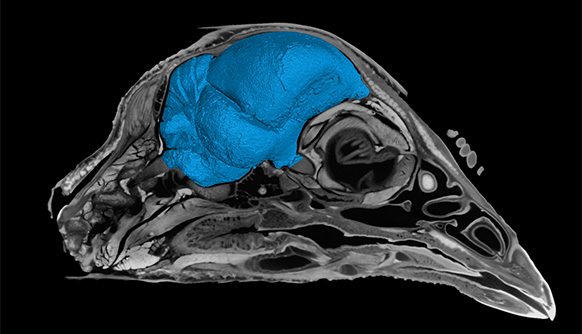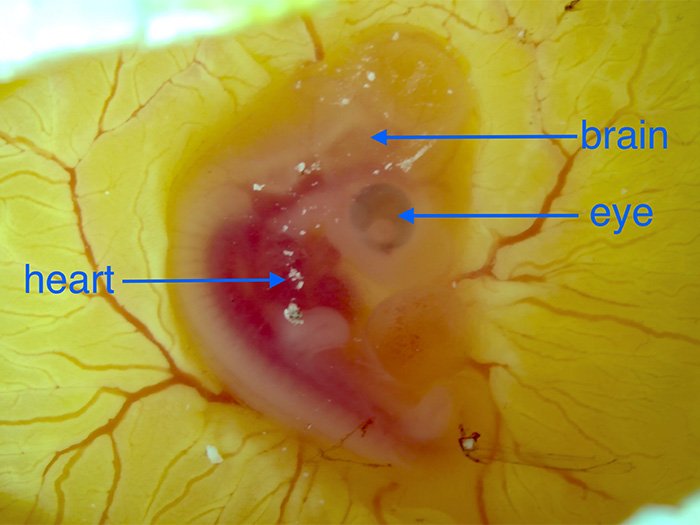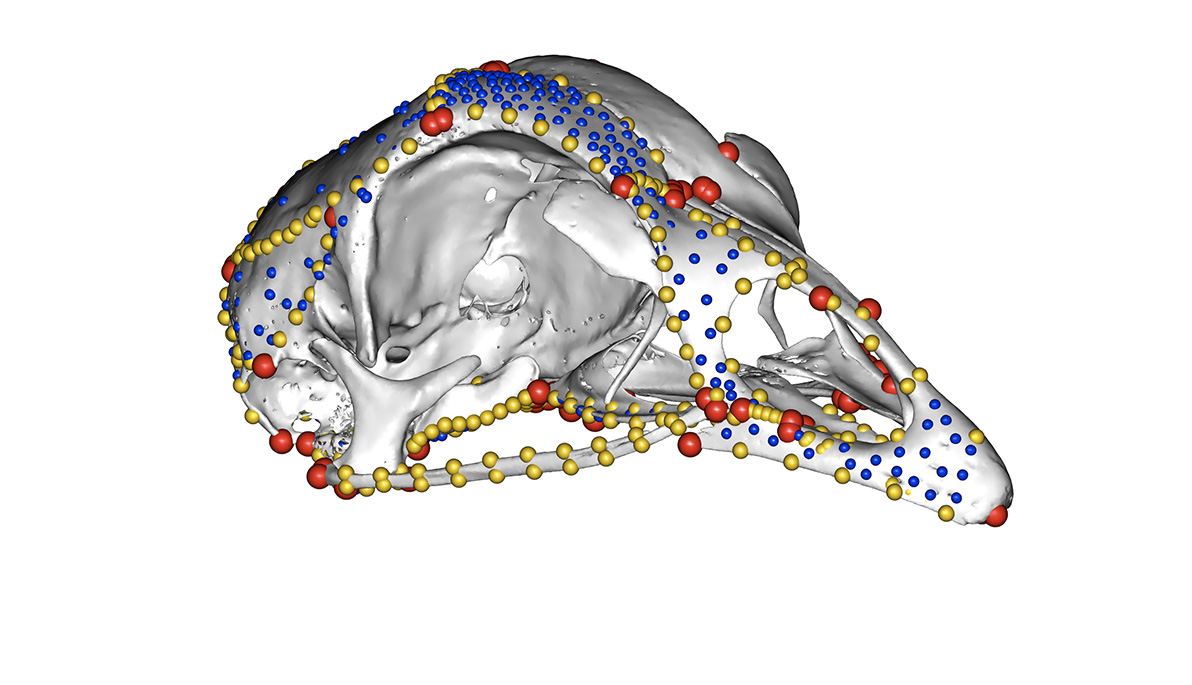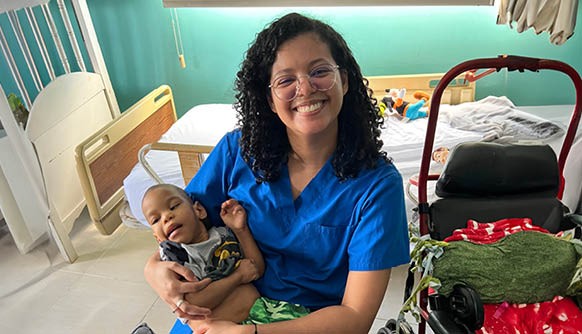News
Improving the Understanding of Cranial Birth Defects
March 10, 2021
Pictured: Brain-skull interaction will be digitally modeled and analyzed using a high-density shape analysis, similar to this digital model of a chicken skull. The colors represent different types of landmark points. The red are distinct anatomical features, the yellow are boundaries of each skull bone, and blue points characterize the shape within each bone.
New research by Akinobu “Aki” Watanabe, Ph.D., assistant professor of anatomy at NYIT College of Osteopathic Medicine (NYITCOM), aims to help clinicians better understand cranial birth defects in newborns.
His project, “Evo-Developmental Interactions of Craniofacial and Brain Anatomy,” funded by a prestigious Faculty Early Career Development Program (CAREER) award from the U.S. National Science Foundation (NSF), will examine how the brain and skull have interacted over millions of years to cause evolutionary structural changes, as well as the causes of brain-skull interaction in the days and weeks before birth. Combining traditional and advanced research techniques, the project is the most comprehensive of its kind to investigate brain-skull interaction over these two complementary timescales.
Watanabe, a vertebrate paleontologist, is the first New York Tech faculty member to receive a CAREER award, which is one of the NSF’s most competitive grants. Principal investigators can receive this award once in their career and may only submit a proposal three times. Watanabe’s first submission was selected and is expected to receive a five-year award of $710,855.

Micro-CT scanning technology, shown here on a chicken brain, will be used to analyze the evolution of brains and skulls from more than 350 species of birds over millions of years. Understanding brain-skull interaction in birds may provide clues on how the human brain and skull have interacted to cause evolutionary structural changes.
His research may help clinicians prevent and treat future neurological and cranial birth defects, which can cause developmental delays, physical disabilities, and even death. In particular, findings could further understanding of craniosynostosis, a condition where a newborn’s skull joints close prematurely and prevent normal brain growth, and hydrocephalus, a condition where excess cerebrospinal fluid (the fluid that flows around the brain and spinal cord) expands brain tissue, leading to skull swelling.
“The brain and skull are intimately linked physically, developmentally, and functionally, and this interaction needs to be clarified to gain a holistic understanding of the forces that shape the development and evolution of these structures. I will study these interactions using birds as a model system, but this topic has clinical relevance to serious birth defects in humans,” said Watanabe, who has also lent his expertise to several other NSF-funded studies.
While many studies analyze the brain and skull as independent structures, Watanabe will simultaneously study the evolution and development of both structures and their “tissue-to-tissue” relationship. In two complementary studies, Watanabe will analyze brain-skull interaction in birds, which have a large brain, like many mammals, with some birds capable of higher cognitive functions, similar to humans. In one study, he will use computed tomography (CT) technology, including the micro-CT scanner at the NYITCOM Visualization Center, and high-density shape modeling to analyze how brain-skull interaction has impacted the evolution of these two structures over millions of years. More than 350 species of birds, ranging from hummingbirds to ostriches, will be analyzed. The other study will pinpoint the mechanisms responsible for brain-skull interactions during early development. Using both classic and modern research techniques, Watanabe will collect samples from live chicken embryos and visualize the interaction between the brain and the skull over their 21-day gestational period.

Microscopic view of a five-day-old chicken embryo. Watanabe’s research will observe and manipulate brain and skull development to reveal how these structures influence one another.
Bringing His Research to Life
CAREER program proposals must also include an educational component. In collaboration with NYITCOM’s Center for Biomedical Innovation, he will create a virtual reality game reflecting the project’s research themes, which will serve as an educational tool for students in middle school through college. In a second educational initiative, he will transform the scientific data into music, which will culminate with a public recital, allowing science education to reach wider, more inclusive communities, including the visually impaired and non-scientists.
“This award, and the impressive body of work behind it, exemplifies our mission and the research and scholarship we encourage all of our faculty to pursue as they serve as ambassadors for our institution and role models for our students,” said New York Tech President Hank Foley, Ph.D. “Such grants open doors for scientific discoveries that are critical in advancing our vision to innovate and reinvent the future. This award will help elevate New York Tech’s reputation within the scientific research community as well as our standing among peers.”
The NSF is an independent agency of the U.S. government that supports fundamental research and education in all the non-medical fields of science and engineering. Its medical counterpart is the National Institutes of Health. NSF funding accounts for approximately 27 percent of the total federal budget for basic research conducted at U.S. colleges and universities. This project is funded by NSF CAREER Award ID No. 2045466. The content is solely the responsibility of the authors and does not necessarily represent the official views of the NSF.





